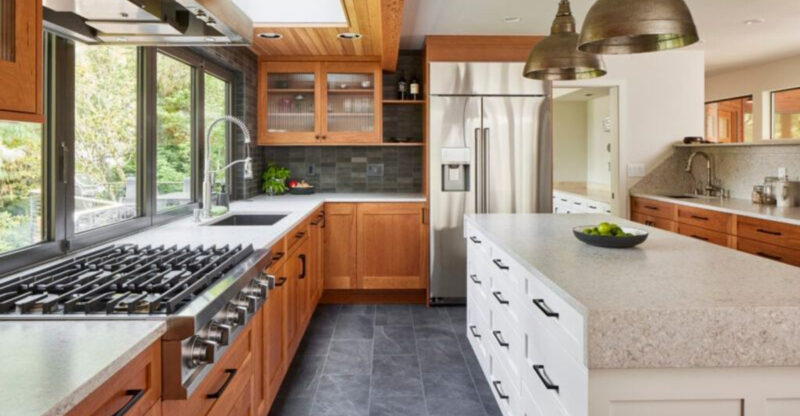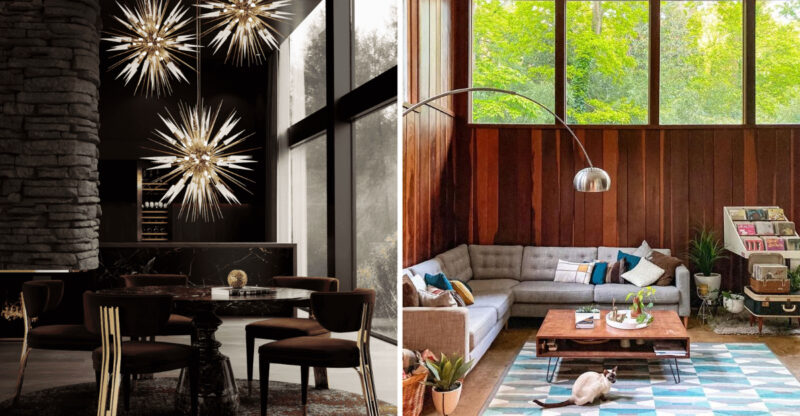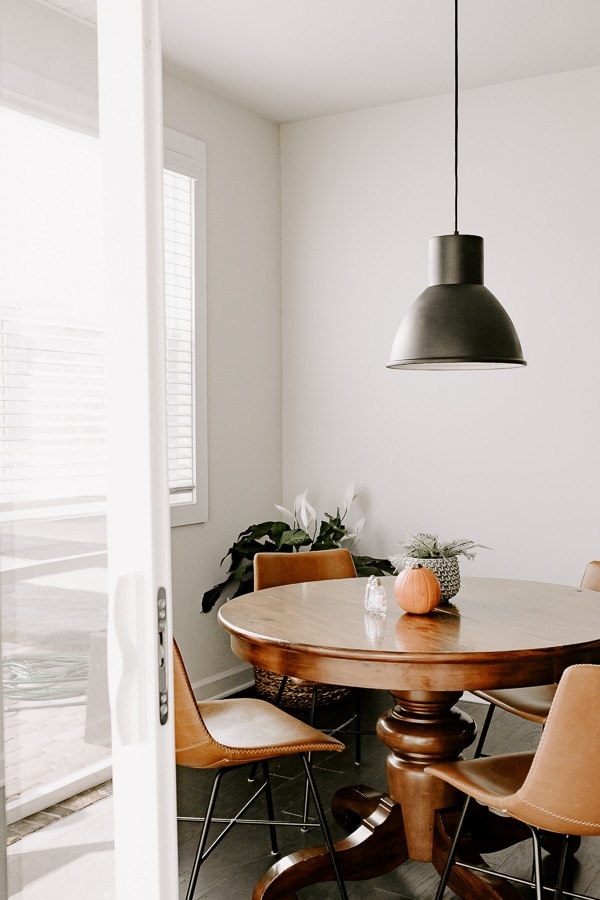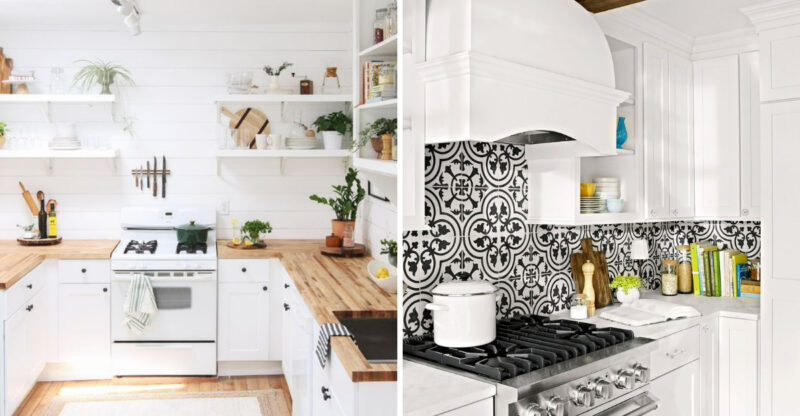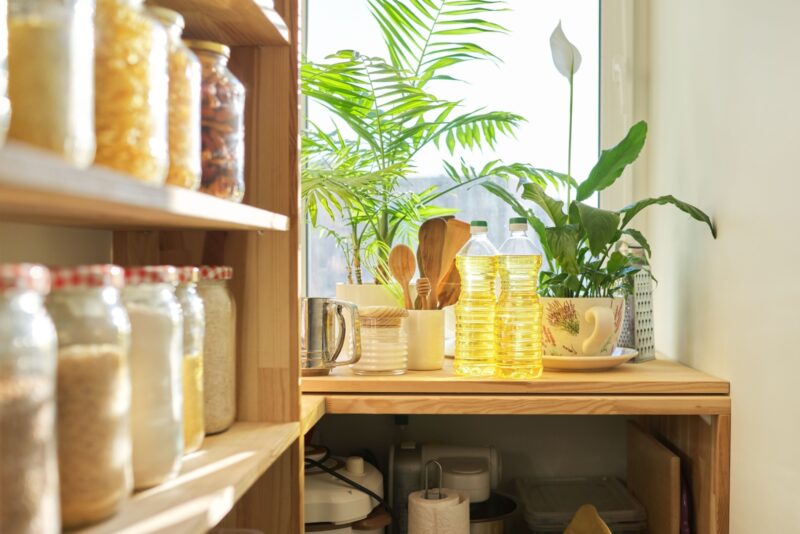21 Decorating Tricks That Could Completely Transform Your Home
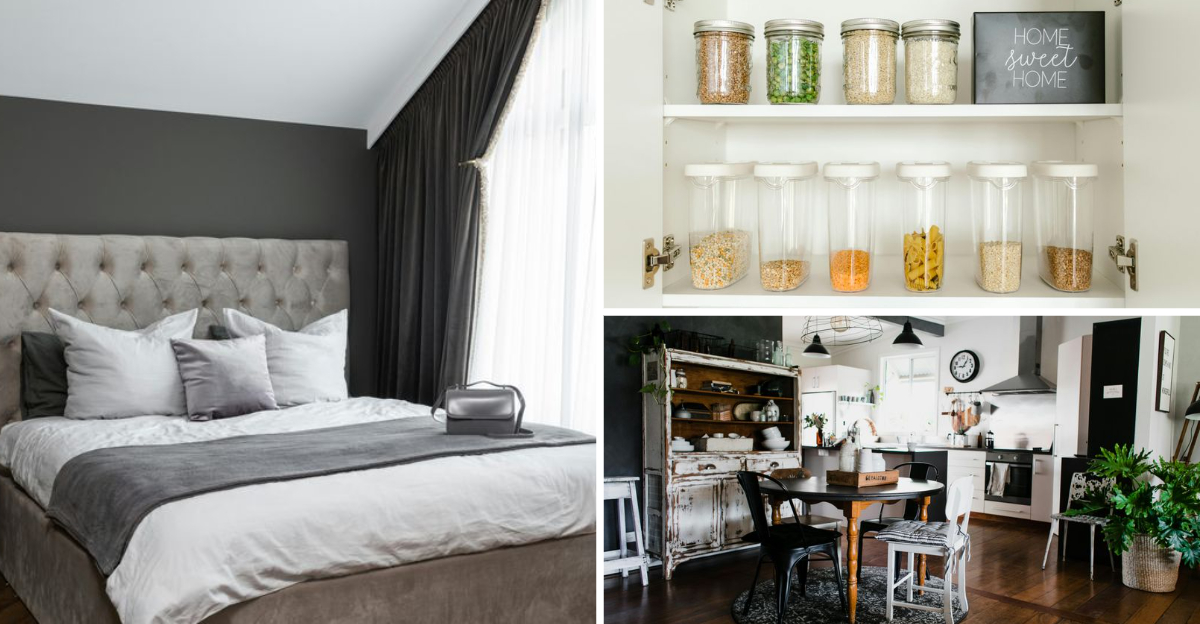
Want to refresh your home without spending a fortune? Even minor tweaks can dramatically change the atmosphere of your space.
I’ve put together 21 simple decorating ideas that are easy to implement, budget-friendly, and suitable for any skill level.
While results may vary depending on your home’s layout and style, these tips can inspire a noticeable transformation.
1. Rearranging Furniture for Better Flow
Ever walked into a room and felt something was off? The answer might be in your furniture layout. Moving pieces around costs nothing but can dramatically change how a space functions.
Try pulling furniture away from walls to create conversation areas. In small rooms, angling a sofa or chair in a corner can make the space feel larger. Consider the natural pathways through rooms you should be able to walk through without obstacles.
Sometimes removing a piece entirely makes the biggest difference. Take photos before and after to see the transformation. Many homeowners are shocked at how different their existing furniture looks in new arrangements!
2. Adding Mirrors to Reflect Light
Mirrors are magical tools in home design! They bounce natural light around a room, instantly making spaces feel brighter and more expansive. A strategically placed mirror opposite a window multiplies daylight and creates the illusion of another window.
For maximum impact, hang a large mirror in a small room or dark hallway. Mirrored furniture pieces like side tables or cabinet fronts add sparkle without overwhelming a space. Grouping several smaller mirrors together creates an artistic display while amplifying light.
When shopping for mirrors, look for interesting frames that complement your decor style. Vintage mirrors with patina add character, while sleek frameless options work beautifully in modern homes.
3. Layering Rugs for Texture
Layering rugs creates instant visual interest and coziness underfoot. Start with a larger, natural fiber rug like jute or sisal as your base layer. These neutral foundations work in any room and provide texture without competing with other elements.
On top, place a smaller, more colorful or patterned rug at an angle or centered. This technique allows you to incorporate bold designs without overwhelming your space. The contrast between textures rough and smooth, flat-weave and shaggy adds dimension and warmth.
This trick works especially well in open-concept spaces to define separate areas without walls. Plus, it’s a smart way to repurpose smaller rugs that might not cover enough floor space on their own!
4. Using Bold Accent Colors
Bold colors can transform a bland room into a vibrant sanctuary without a major overhaul. The secret is using them strategically as accents rather than overwhelming the space. Think of accent colors like exclamation points in your decor story!
Choose one or two bold hues that complement your existing color scheme. Introduce these through easily changeable items like throw pillows, vases, artwork, or a single piece of furniture. A bright yellow chair or teal bookshelf can become the star of an otherwise neutral room.
For maximum impact, repeat your accent color in small doses throughout the space. This creates a cohesive look that guides the eye around the room while adding energy and personality to your home.
5. Updating Window Treatments
Window treatments are like the eyebrows of your room they frame everything and make a huge difference in the overall appearance! Swapping outdated blinds or curtains can instantly modernize any space.
Hanging curtains higher and wider than your actual window creates the illusion of larger windows and higher ceilings. For maximum impact, position your curtain rod 4-6 inches above the window frame and extend it 8-12 inches beyond each side. Choose fabrics that complement your decor style linen for casual spaces, velvet for luxury, or sheer panels for a light, airy feel.
Don’t forget about hardware! Decorative curtain rods and finials are jewelry for your windows and can elevate even simple panels.
6. Incorporating Statement Lighting
Lighting is the unsung hero of home design! A statement light fixture can completely transform a room’s personality while serving the practical purpose of illumination. Think of lighting as jewelry for your home it adds that perfect finishing touch.
In dining areas, hang a chandelier or pendant 30-36 inches above the table to create an intimate atmosphere. For living rooms, floor lamps with interesting shapes add height and drama. Bedside sconces free up nightstand space while providing focused reading light.
When selecting statement pieces, consider scale carefully. Too small, and the fixture gets lost; too large, and it overwhelms. The best statement lights reflect your personal style while complementing your existing decor rather than competing with it.
7. Swapping Out Cabinet Hardware
Hardware is like jewelry for your cabinets and drawers! Replacing those basic knobs and pulls can dramatically update kitchens and bathrooms without the expense of full renovations. This small change packs a serious style punch.
For modern spaces, try sleek bar pulls in matte black or brushed brass. Traditional homes shine with cup pulls or glass knobs that add vintage charm. The key is consistency while mixing metals can work beautifully, keeping all hardware in the same finish creates a cohesive look.
When shopping, bring an existing piece with you to ensure new hardware fits existing holes. If you’re changing from knobs to pulls, you’ll likely need to drill new holes, but the transformation is worth the extra effort!
8. Adding Wall Art in Unexpected Places
Art doesn’t belong only in living rooms and above sofas! Hanging artwork in surprising locations creates delightful moments throughout your home. The laundry room, bathroom, or that awkward hallway corner can become charming focal points with the right piece.
Consider hanging a small gallery in your pantry, or place a striking print inside a bookshelf. Powder rooms are perfect for bold art choices since guests spend limited time there. Even the space above doorways often overlooked can showcase interesting pieces that draw the eye upward.
When selecting art for unusual spots, consider the environment. Bathrooms need properly framed pieces to withstand humidity, while kitchen art benefits from glass covering to protect from cooking splatters and make cleaning easier.
9. Installing Floating Shelves
Floating shelves offer that perfect blend of style and function! Without visible brackets, these sleek storage solutions seem to defy gravity while showcasing your favorite items. They work wonders in awkward corners or narrow spaces where traditional furniture won’t fit.
In kitchens, floating shelves display pretty dishes while keeping them within easy reach. Bathroom shelves provide storage without the bulk of cabinets, making small spaces feel larger. For living areas, try arranging shelves in stepped configurations or asymmetrical patterns for added visual interest.
When styling floating shelves, follow the designer’s rule of three group items in odd numbers, vary heights and textures, and leave some breathing room. This prevents the cluttered look that can happen when shelves become too crowded.
10. Using Open Shelving for Display
Open shelving transforms everyday items into deliberate decor elements! Unlike traditional cabinets that hide contents away, open shelves invite you to curate collections that reflect your personality while keeping frequently used items accessible.
The secret to stunning open shelves is thoughtful arrangement. Group similar items by color, size, or function to create visual harmony. Incorporate a mix of practical and purely decorative pieces stacks of pretty plates alongside a small plant or art piece. Leave some negative space between groupings to prevent a cluttered appearance.
For kitchen shelving, consider removing upper cabinets in just one section rather than throughout. This creates a focal point without sacrificing too much closed storage for less display-worthy items that every home inevitably accumulates.
11. Introducing Indoor Plants
Plants breathe literal life into any space! Beyond their beauty, houseplants improve air quality, boost mood, and add that organic element that makes rooms feel complete. Even if you lack a green thumb, there’s a plant that can thrive in your home.
For beginners, try nearly indestructible varieties like snake plants, pothos, or ZZ plants that forgive irregular watering. Place larger floor plants in empty corners to fill awkward spaces. Small plants work beautifully on bookshelves, countertops, or bathroom vanities.
Don’t overlook plant containers as design elements! Ceramic pots, woven baskets, or vintage containers can enhance your decor style. For a cohesive look, choose planters that complement your color scheme while providing enough variety to keep things interesting.
12. Placing Decorative Trays on Tables
Decorative trays are the unsung heroes of stylish homes! They instantly transform scattered items into intentional vignettes while adding texture and visual interest to flat surfaces. A tray turns everyday objects into curated collections.
On coffee tables, use trays to corral remotes, coasters, and small decorative objects. Bedside tables benefit from trays that keep essentials like hand cream, reading glasses, and jewelry organized. In bathrooms, trays elevate ordinary toiletries into elegant displays.
The material of your tray should complement your decor style try hammered metal for industrial spaces, wooden trays for rustic homes, or lacquered trays for glamorous interiors. For maximum impact, choose a tray that contrasts with your table surface in color or texture while harmonizing with the overall room design.
13. Adding Throw Pillows with Patterns
Patterned throw pillows are like instant personality injections for your furniture! They add color, texture, and visual interest without major commitment or expense. Swapping pillows seasonally gives you decoration flexibility without redecorating entire rooms.
For a designer look, mix patterns of different scales while keeping a consistent color palette. Try combining a large floral print with a smaller geometric pattern and a solid textured pillow. Odd numbers work best groups of three or five pillows create balance without overcrowding.
Don’t be afraid to invest in quality pillow inserts even if you change covers frequently. Down or down-alternative inserts maintain their shape and fullness better than foam, creating that luxurious, professional look. The perfect pillow arrangement should look inviting rather than fussy casual enough to actually use!
14. Mixing Different Textures in Fabrics
Texture is the secret ingredient that makes rooms feel rich and layered! Mixing different fabric textures creates visual and tactile interest that flat, one-dimensional spaces lack. This technique works even when using a limited color palette.
Combine smooth silks with rough linens, plush velvets with nubby wools, or sleek leather with soft cotton. Each pairing creates contrast that draws the eye and invites touch. In bedrooms, layer crisp cotton sheets with a chunky knit throw and linen duvet for an instantly inviting look.
When mixing textures, consider the room’s purpose. Relaxing spaces benefit from soft, cozy textures that encourage lingering. More formal areas can incorporate smoother, more structured fabrics that maintain their shape and appearance with less maintenance.
15. Painting an Accent Wall
An accent wall packs major design impact with minimal effort! By painting just one wall in a bold color or pattern, you can transform a room’s entire feel without overwhelming the space. It’s the perfect solution for color-lovers who fear commitment to a fully painted room.
Choose the right wall for maximum effect typically the first wall you see when entering or one that already has a focal point like a fireplace or bed headboard. Darker colors visually recede, making the wall appear farther away and the room larger. Lighter or brighter colors bring the wall forward, creating coziness.
If you’re hesitant about color, try a neutral accent wall in a slightly darker shade than your other walls. This subtle contrast adds dimension without risk, creating sophisticated depth that flat, single-color rooms often lack.
16. Using Wallpaper on One Wall
Wallpaper has made an incredible comeback in home design! Applying it to just one wall creates instant drama without overwhelming a space or breaking the budget. Modern papers come in endless patterns from subtle textures to bold botanicals.
The best wall for wallpaper is often one with architectural significance behind a bed, fireplace, or dining area. Wallpaper with vertical patterns can make ceilings appear higher, while horizontal patterns visually widen narrow rooms. For small spaces like powder rooms, don’t be afraid to go bold these areas benefit from dramatic treatment since you don’t spend hours there.
If you’re renting or commitment-shy, peel-and-stick options offer the same impact with easy removal. These temporary papers have come a long way in quality and now look just as good as traditional wallpapers.
17. Replacing Old Curtains with Sheer Options
Sheer curtains work magic in almost any room! They filter light beautifully while maintaining privacy and adding soft texture to windows. Unlike heavy drapes that can make spaces feel closed-in, sheers create airy lightness that expands visual space.
White or ivory sheers are classics that work with any decor style, but don’t overlook colored options. Pale blue or green sheers cast a subtle, colored glow that changes throughout the day. For maximum impact, hang sheers from ceiling to floor, even on short windows this creates the illusion of taller ceilings and larger windows.
If you need more privacy or light control, layer sheers behind heavier curtains or blinds. During the day, pull back the outer layer while keeping sheers closed for that perfect balance of light and privacy.
18. Layering Bedding with Throws and Pillows
Layered bedding transforms a basic bed into a luxurious retreat! Hotels understand this secret it’s not about expensive linens but rather the artful layering of different textures and weights that creates that irresistible, sink-in feeling we all crave.
Start with quality basics fitted and flat sheets in solid colors or subtle patterns. Add a duvet or comforter, folded down about one-third from the top. Layer a textured throw blanket across the bottom third, slightly askew for that casual-luxe look. For pillows, arrange sleeping pillows against the headboard, then add 2-3 decorative pillows in complementary colors or patterns.
The magic happens when you mix textures crisp cotton sheets with a linen duvet and chunky knit throw create dimension that flat, matching bedding sets simply can’t achieve.
19. Adding a Statement Headboard
A statement headboard instantly transforms any bedroom! As the focal point of your sleeping space, it anchors the room and sets the style tone. The best part? Many headboard options don’t require professional installation or major investment.
Upholstered headboards add softness and color while providing comfortable back support for reading in bed. Wood headboards bring natural warmth and texture. For something truly unique, repurpose architectural elements like old doors, decorative screens, or even fabric hung from a curtain rod.
When selecting height, taller headboards create drama and work beautifully in rooms with high ceilings. In smaller spaces, a lower profile headboard maintains proportion while still defining the bed area. The width should ideally be slightly wider than your mattress for balanced proportions that frame your bed perfectly.
20. Using Books as Decorative Items
Books aren’t just for reading they’re instant decor with personality! Beyond filling bookshelves, books can be artfully arranged throughout your home to add color, texture, and a sense of lived-in sophistication that few other accessories can match.
Stack books horizontally on coffee tables, creating platforms for small decorative objects. Remove dust jackets to reveal beautiful cloth bindings in coordinating colors. Turn some books spine-in for a neutral, textural look that’s become popular in minimalist styling (though book lovers might consider this controversial!).
For a cohesive look, group books by color to create rainbow sections or stick to specific color families that complement your decor. Don’t overlook oversize art and photography books their beautiful covers can be displayed almost like artwork when placed on easels or coffee tables.
21. Incorporating Vintage or Antique Pieces
Vintage pieces inject instant soul into any space! Unlike mass-produced items, antiques carry history and character that new furniture simply can’t replicate. Even one special piece can transform a room from generic to uniquely yours.
Mix old with new to prevent your space from feeling like a time capsule. A vintage leather chair paired with a modern sofa creates beautiful tension between eras. An antique mirror or artwork in an otherwise contemporary room becomes a striking focal point.
When shopping for vintage, look beyond current condition many pieces can be easily refreshed. Wood furniture can be refinished or painted, and upholstered pieces can be recovered in modern fabrics. The solid construction of many vintage pieces often surpasses today’s furniture, making them both sustainable and practical additions to your home.

